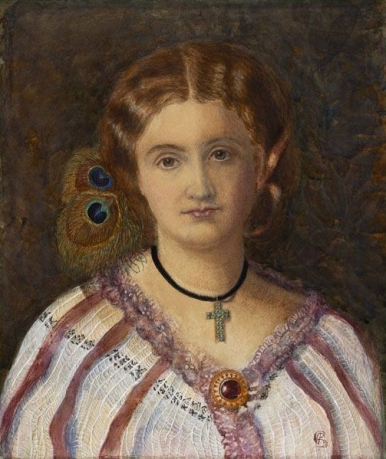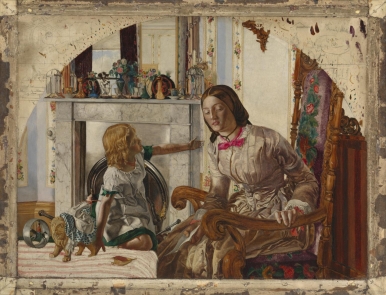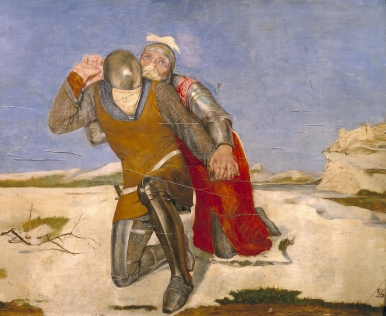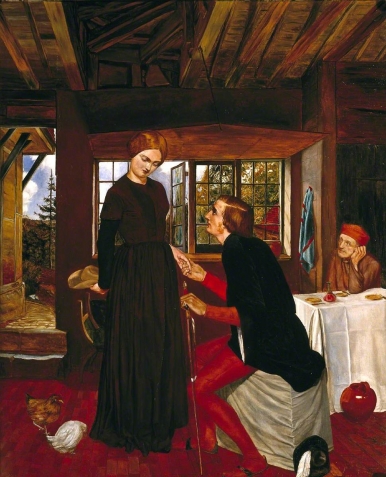프레드릭 조지 스테판(Frederic George Stephens)FOLLOW
1828 영국 런던 출생 - 1907년03월09일
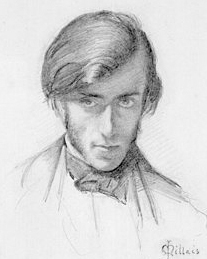
학력
1884년 영국왕립미술학교 회화 전공 학사
추가정보
Stephens was born to Septimus Stephens of Aberdeen and Ann in Walworth, London and grew up in nearby Lambeth. Because of an accident in 1837, he was physically disabled and was educated privately. He later attended University College School, London. In 1844 he entered the Royal Academy Schools where he first met Sir John Everett Millais and William Holman Hunt. He joined their Pre-Raphaelite Brotherhood in 1848, often modelling for them in pictures including Millais's Ferdinand Lured by Ariel (1849) and Ford Madox Brown's Jesus Washing Peter's Feet (1852-6). There is a pencil portrait of Stephens by Millais dated 1853 in the collection of the National Portrait Gallery. He was so disappointed by his own artistic talent that he took up art criticism and stopped painting. He claimed to have destroyed all his paintings in 1850 but three of them are still at the Tate Gallery, London: The Proposal (The Marquis and Griselda) (circa 1850), Morte d'Arthur (circa 1850-55), and Mother and Child (circa 1854) along with a pencil drawing of his mother (1850).
He communicated the aims of the Brotherhood to the public. He became the art critic and later the art editor of the Athenaeum while writing freelance for other art-history periodicals on the continent and the United States including Art Journal and Portfolio (magazine). His contributions to the Brotherhood's magazine The Germ were made under the pseudonyms Laura Savage and John Seward. During this time he was heavily influenced by Dante Gabriel Rossetti, whom he allowed to write reviews of his own work under Stephens's name.
Stephen's first work of art history, Normandy: its Gothic Architecture and History was published in 1865, and Flemish Relics, a history of Netherlandish art, appeared in 1866. Monographs on William Mulready (1867) and on Edwin Landseer (1869) followed. In 1873 he started writing series of almost 100 articles on British collecting for the Athenaeum; these treated major collections and small collectors alike thus encouraging middle-class art patronage and the growing Victorian interest for contemporary art.
He was also Keeper of the Prints and Drawings in the British Museum and wrote most entries in the first volumes of the Catalogue of Prints and Drawings in the British Museum, Division I: Political and Personal Satires, from 1870 onward. In 1875, Stephens began to characterise himself as an art historian rather than a criticand in 1877 he started to write contributions for the Grosvenor Gallery catalogues, which he continued to do until 1890. When Rossetti died Stephens co-wrote his obituary for the edition of Athenaeum dated April 15, 1882.
Stephens was very critical of his former tutor Holman Hunt's Triumph of the Innocents {1885) for its mixing of hyper-realism and fantasy. Almost twenty years later Hunt retaliated by launching a scathing attack on Stephens in the second edition of his Pre-Raphaelitism and the Pre-Raphaelite Brotherhood (1914). In 1894, Stephens published a Portfolio monograph on Rossetti. He contributed essays on art to Henry Duff Traill's Social England: a Record of the Progress of the People (1893?) placing Pre-Raphaelitism in a continuing tradition of British art. This contradicted the Brotherhood's view that they had flowered uniquely from a pallid past. In 1895 he published a book on Lawrence Alma-Tadema and his review of the posthumous exhibition of Millais in 1898 took the painter to task for poorly thought-out works.
Other artists about whom he wrote include Thomas Bewick, Edward Burne-Jones, George Cruikshank, Thomas Gainsborough, William Hogarth, Edwin Landseer, William Mulready, Samuel Palmer, Joshua Reynolds, Thomas Rowlandson, Sir Anthony Van Dyck, and Thomas Woolner.
Stephens' conservative views on modern art and his strong dislike of Impressionism ended his forty-year association with the Athenaeum.
Stephens married the artist Rebecca Clara Dalton in 1866. They had a son Holman Fred Stephens (1869-1931) and at the time of the 1881 census the family was living at 10 Hammersmith Terrace, Hammersmith. Stephens died at home on March 9, 1907 and is buried in Brompton Cemetery. Much of is collection of art and books was auctioned at Fosters in 1916, after his widow's death, but his son bequethed several works of art to the Tate Gallery
He is sometimes cited as the great exponent of writer's block: He started to write a political sonnet for the first number of The Germ magazine. On October 13, 1849 he had completed 11?lines, which he showed to James Collinson, who said they were "the best of all." By November 12 it had "attained the length of 12 lines, with the reservation of a tremendous idea for the final two." The magazine appeared in January 1850 but the poem was never published.

